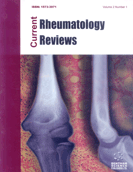Abstract
Background: Primary hyperoxaluria consists of a group of inherited disorders with enzymatic defects in the glyoxylate pathway, leading to decreased oxalate metabolism. The resulting oxalic deposition is specifically responsible for kidney disease and joint disease. Neonatal oxalosis is the most severe form of primary hyperoxia type 1, with the onset of end-stage renal disease in childhood.
Case Presentation: A 55-year-old hemodialysis man was referred to Nephrology because of inflammatory polyarthralgia and periarticular swelling evolving for six months. He had been on hemodialysis for six years for end-stage chronic renal failure, diagnosed at the same time as primary hyperoxaluria. Radiological investigation showed a rugby jersey appearance on the lumbar spine, budding calcium tone opacities next to large joints and clavicles, vascular calcifications and tumoral calcinosis. The synovial fluid contained a few cells with polymorphic intracellular crystals. We ruled out hyperparathyroidism, hypoparathyroidism, and related phosphocalcic disorders, and we retained arthropathy and tumoral calcinosis secondary to primary hyperoxaliuria. The patient also had congestive heart failure. Despite intensification of hemodialysis, he did not improve and died at the age of 56 in the context of cachexia.
Conclusion: This rare case documents the possible occurrence of late clinical presentation and long survival in primary oxalosis with extra renal complications.
Keywords: Primary hyperoxaluria, calcinosis, dialysis, arthritis, synovial fluid, phosphocalcic disorders, hemodialysis.
[http://dx.doi.org/10.1007/s11926-013-0340-4] [PMID: 23666469]
[http://dx.doi.org/10.1093/ndt/18.2.273] [PMID: 12543880]
[http://dx.doi.org/10.1002/jcla.22053] [PMID: 27561601]
[http://dx.doi.org/10.1016/j.gene.2013.06.023] [PMID: 23810941]
[http://dx.doi.org/10.1016/j.reumae.2013.04.002]
[http://dx.doi.org/10.3265/Nefrologia.pre2014.Jan.12335]
[http://dx.doi.org/10.1007/BF02011105] [PMID: 7567242]
[http://dx.doi.org/10.1182/blood-2011-12-400192] [PMID: 22953330]
[http://dx.doi.org/10.1007/s00247-016-3723-7] [PMID: 27844104]
[http://dx.doi.org/10.1186/s12907-017-0059-7] [PMID: 28943803]
[http://dx.doi.org/10.1056/NEJMra1301564] [PMID: 23944302]
[http://dx.doi.org/10.1007/s11832-008-0082-4] [PMID: 19308578]
[http://dx.doi.org/10.1111/imj.14130] [PMID: 30517983]
[http://dx.doi.org/10.3949/ccjm.88a.20084] [PMID: 33795242]
[http://dx.doi.org/10.1016/S0272-6386(12)80833-X] [PMID: 1595703]
[PMID: 2612083]
[http://dx.doi.org/10.1016/j.ijscr.2022.107471] [PMID: 35933951]














